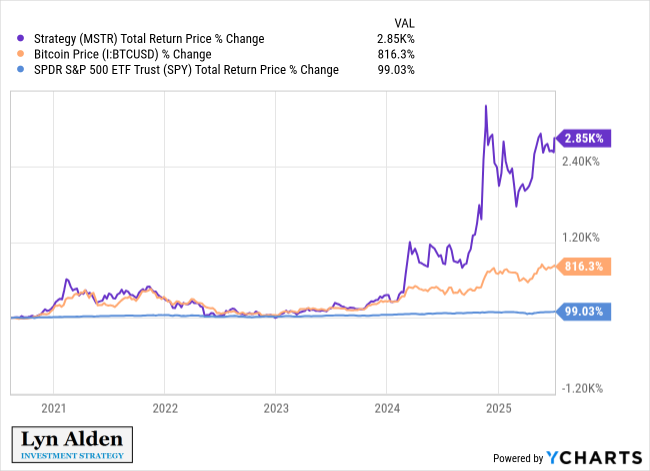-
Fund restrictions on direct crypto purchases are fueling demand for Bitcoin treasury stocks like MSTR, offering a strategic alternative for indirect Bitcoin exposure.
-
Issuing long-term bonds enables companies to leverage Bitcoin holdings safely, avoiding margin call risks common in hedge funds and leveraged ETFs.
-
Investor enthusiasm for Digital Asset Treasury (DAT) stocks is rising as they provide a bridge between traditional finance and cryptocurrency markets, often outperforming major digital tokens.
Discover how fund restrictions and safer leverage options are driving the surge in Bitcoin treasury stocks and Digital Asset Treasury investments in 2025.
Fund Restrictions Propel Demand for Bitcoin Treasury Stocks Like MSTR
Investment funds often face regulatory or mandate-based restrictions that prevent them from directly purchasing Bitcoin or cryptocurrency ETFs. This limitation has created a niche for Bitcoin treasury stocks, such as MicroStrategy (MSTR), which hold significant Bitcoin reserves on their balance sheets. These stocks provide an accessible vehicle for funds seeking Bitcoin exposure without breaching investment guidelines.
According to fund manager Lyn Alden, this indirect exposure has proven highly effective. A comparative analysis from 2021 to mid-2025 reveals MSTR’s total price return soared by 2,850%, significantly outpacing Bitcoin’s 816.3% gain and the S&P 500’s 99.03% increase during the same period.

These figures underscore the appeal of Bitcoin treasury stocks as a potent alternative for institutional investors constrained by fund mandates. Lyn Alden elaborated, “There are many funds, due to mandates, that can only own stocks or bonds with bitcoin exposure; not ETFs or similar securities. Bitcoin treasury corporations give them access.”
Strategic Portfolio Adaptations Amid Investment Limitations
Lyn Alden shared her personal approach, highlighting that in 2020 she opted for MSTR within her model portfolio because her exchange platform did not support direct Bitcoin or GBTC purchases. This example illustrates how Bitcoin treasury stocks serve as a practical solution for investors navigating platform and regulatory constraints, enabling portfolio diversification with crypto exposure.
Long-Term Bonds Offer Safer Leverage Compared to Hedge Funds and Leveraged ETFs
Another critical factor driving the rise of Bitcoin treasury stocks is the ability of companies to issue long-term bonds to finance Bitcoin acquisitions. Unlike hedge funds that rely on margin borrowing—exposing them to forced liquidations during Bitcoin price downturns—corporate bond issuance provides a more stable and resilient form of leverage.
Lyn Alden emphasized that long-duration corporate debt allows companies to maintain Bitcoin holdings through volatile market cycles without the immediate risk of margin calls. This contrasts sharply with leveraged ETFs, whose daily reset of leverage can exacerbate losses during periods of high volatility.
“This type of longer-duration corporate leverage is also usually better in the long run than leveraged ETFs. Since leveraged ETFs don’t use long-term debt, their leverage resets daily, and so volatility is often quite bad for them,” Alden explained.
Enhanced Stability Through Corporate Financing Structures
By issuing multi-year bonds, companies can strategically manage their Bitcoin exposure with less pressure to liquidate assets prematurely. This approach enhances investor confidence by reducing the likelihood of forced sales triggered by short-term market fluctuations, thereby supporting a more sustainable investment thesis around Bitcoin treasury stocks.
Investor Interest in Digital Asset Treasury Stocks Surges Amid Market Evolution
The growing adoption of Bitcoin as a reserve asset by publicly traded companies has sparked heightened investor interest in Digital Asset Treasury (DAT) stocks. These stocks serve as a bridge between traditional financial markets and the digital asset ecosystem, offering investors familiar instruments with embedded crypto exposure.
Pantera Capital’s recent report highlights that DATs have the potential to deliver superior returns compared to direct investments in underlying digital assets. This is attributed to the strategic management of reserves and the ability to leverage traditional financial tools.

Investor Nachi remarked, “The game has changed after Coinbase gets included in S&P500. Every tradfi PM is hungry and forced to add some digital assets. It’s DAT season, not alts season… The trend is still in the early stage.” This sentiment reflects a broader institutional shift toward regulated, transparent crypto exposure via equity markets.
Market Dynamics Favor Crypto-Focused Stocks Over Altcoins
During the ongoing altcoin winter, stocks of crypto-centric companies such as Coinbase, Circle, and Robinhood have demonstrated resilience and outperformance relative to many major tokens. This trend suggests a preference among investors for regulated, revenue-generating entities with crypto exposure rather than direct altcoin holdings, which often carry higher volatility and regulatory uncertainty.
Conclusion
The rise of Bitcoin treasury stocks and Digital Asset Treasury investments in 2025 reflects a strategic adaptation by institutional investors facing direct crypto purchase restrictions and seeking safer leverage mechanisms. By leveraging long-term corporate bonds and equity instruments, companies provide a compelling alternative to traditional crypto investments, offering enhanced stability and attractive returns. As this market segment matures, it is poised to play a pivotal role in bridging traditional finance with the evolving digital asset landscape, signaling a transformative phase for crypto investment strategies.
